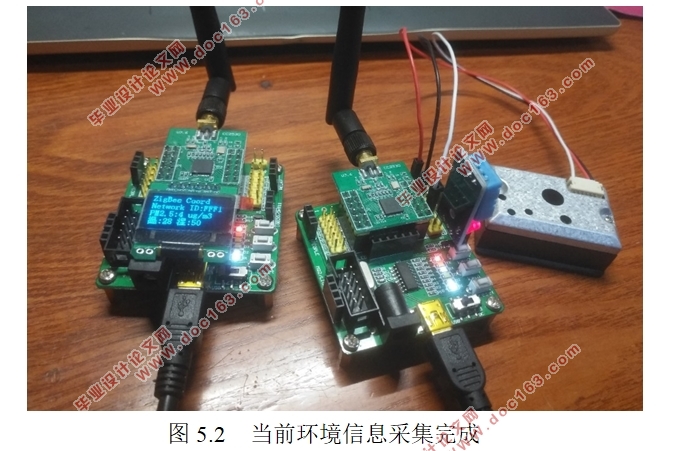基于物联网的单片机数据采集系统设计

1.无需注册登录,支付后按照提示操作即可获取该资料.
2.资料以网页介绍的为准,下载后不会有水印.资料仅供学习参考之用.
密 惠 保
基于物联网的单片机数据采集系统设计(任务书,开题报告,外文翻译,论文12000字)
摘要
天气因素对于人们日常活动影响极大,但各种媒体的天气信息无法覆盖到每个地方和实时显示温度等信息。为了帮助人们进行日常活动决策以及提高生活体验,在物联网和5G背景下,本设计提出了一种室内数据采集系统的详细设计方案。利用基于ZigBee协议的CC2530单片机芯片组建室内小型无线传感网络,利用DHT11温湿度传感器与PM2.5传感器采集当前室内环境温湿度与空气质量数据,并在LCD屏上显示出来。同时,用户也可在电脑软件上看到当前环境的相应信息。本设计详细地介绍了系统硬件、软件设计方案。调试结果表明系统具有低功耗、稳定性高、成本低的特点。
关键词:天气信息;物联网;CC2530;DHT11;PM2.5
Abstract
Weather factors have a great impact on people's daily activities, but weather information from various media cannot cover every place and display information such as temperature in real time. In order to help people make daily activities decisions and improve their life experience, in the context of the Internet of Things and 5G, this design proposes aschemeof indoor data acquisition systemin detail. It makes use of the CC2530 microcontroller chip based on ZigBee protocol to build an indoor small wireless sensor network and takes advantage ofDHT11 humidity and temperature sensor and PM2.5 sensor to get the current indoor surroundings. Humidity, temperature and IAQ data will beshowed on the LCD screen. Meanwhile, users could see the information of the environmentthere on the computer software either. This design tells the plan of how to make system software andhardware in a detailway . The debugging results display that this system has the strong advantages like low power consumption, low cost and high stability . [资料来源:THINK58.com]
Key Words:weather information;Internet of Things;CC2530;DHT11; PM2.5 [来源:http://www.think58.com]

目录
第1章绪论 6
1.1课题研究背景 6
1.2研究现状与意义 6
1.3本文研究内容 8
第2章系统总体设计分析 9
2.1 无线通信技术对比 9
2.2 ZigBee技术分析 10
2.2.1 ZigBee的设备节点类型 10
2.2.2 ZigBee的网络拓扑结构 11
2.2.3 ZigBee协议栈 12
2.3单片机芯片的选择 13
2.4 本章小结 14
第3章系统硬件方案设计 15
3.1 主控芯片电路 15
3.2 温湿度传感器电路 16
3.3 PM2.5传感器电路 16
3.3.1极限工作条件 17 [资料来源:THINK58.com]
3.3.2功能框图 17
3.3.2接口定义 18
3.3.3 通讯模式 18
3.3.4 串口输出参数 18
3.3.5 灰尘浓度计算方法 19
3.4 LCD显示电路 19
3.5 串口转USB电路 19
3.6 本章小结 20
第4章系统软件方案设计 21
4.1系统初始化 23
4.2 终端接收传感器数据并解析 24
4.3 PM2.5数据帧解析 25
4.4 周期上传PM2.5、温度和湿度数据 26
4.5 协调器显示 27
第五章系统功能测试 28
总结与展望 30
致谢 32 [资料来源:http://think58.com]
